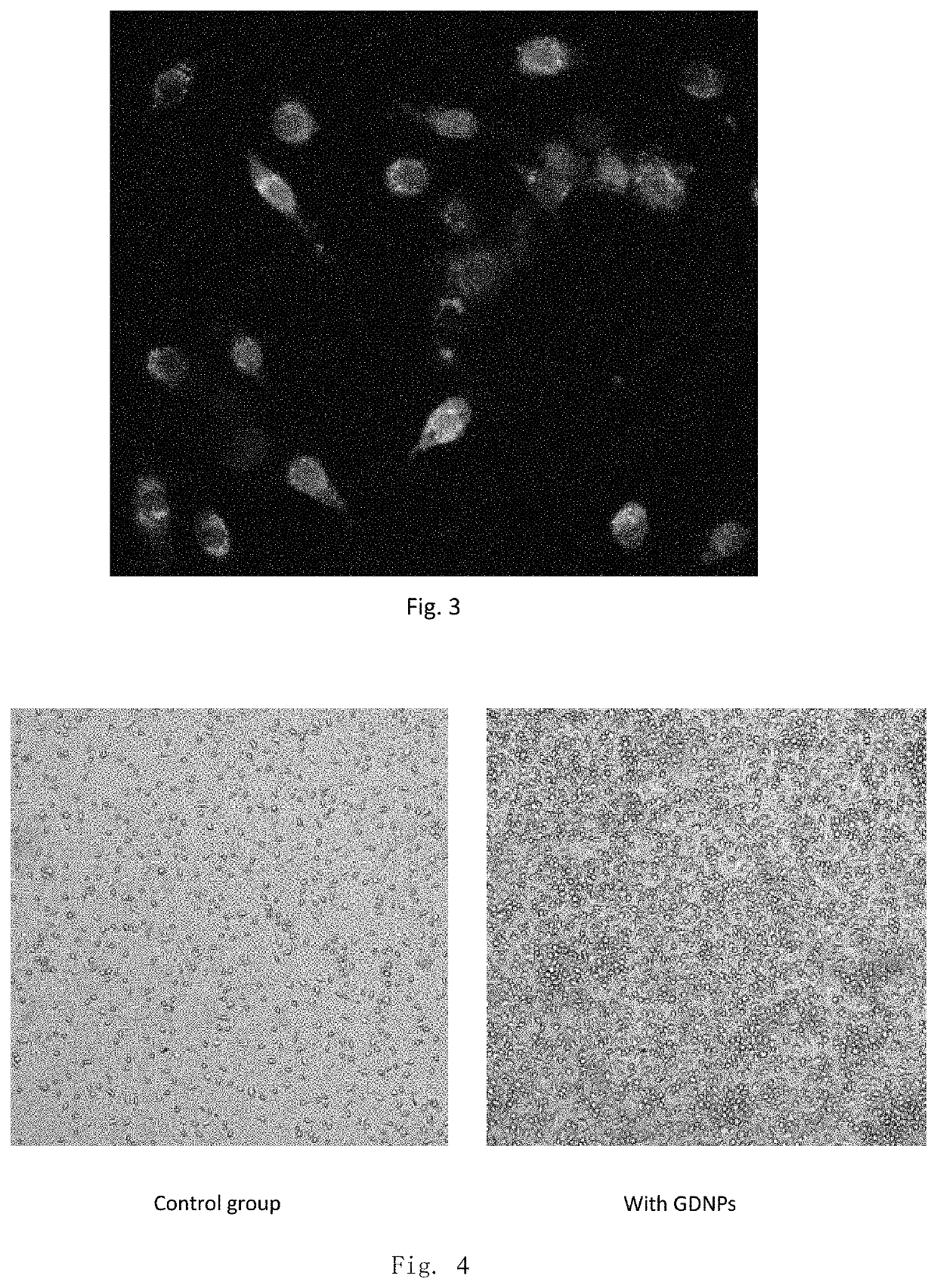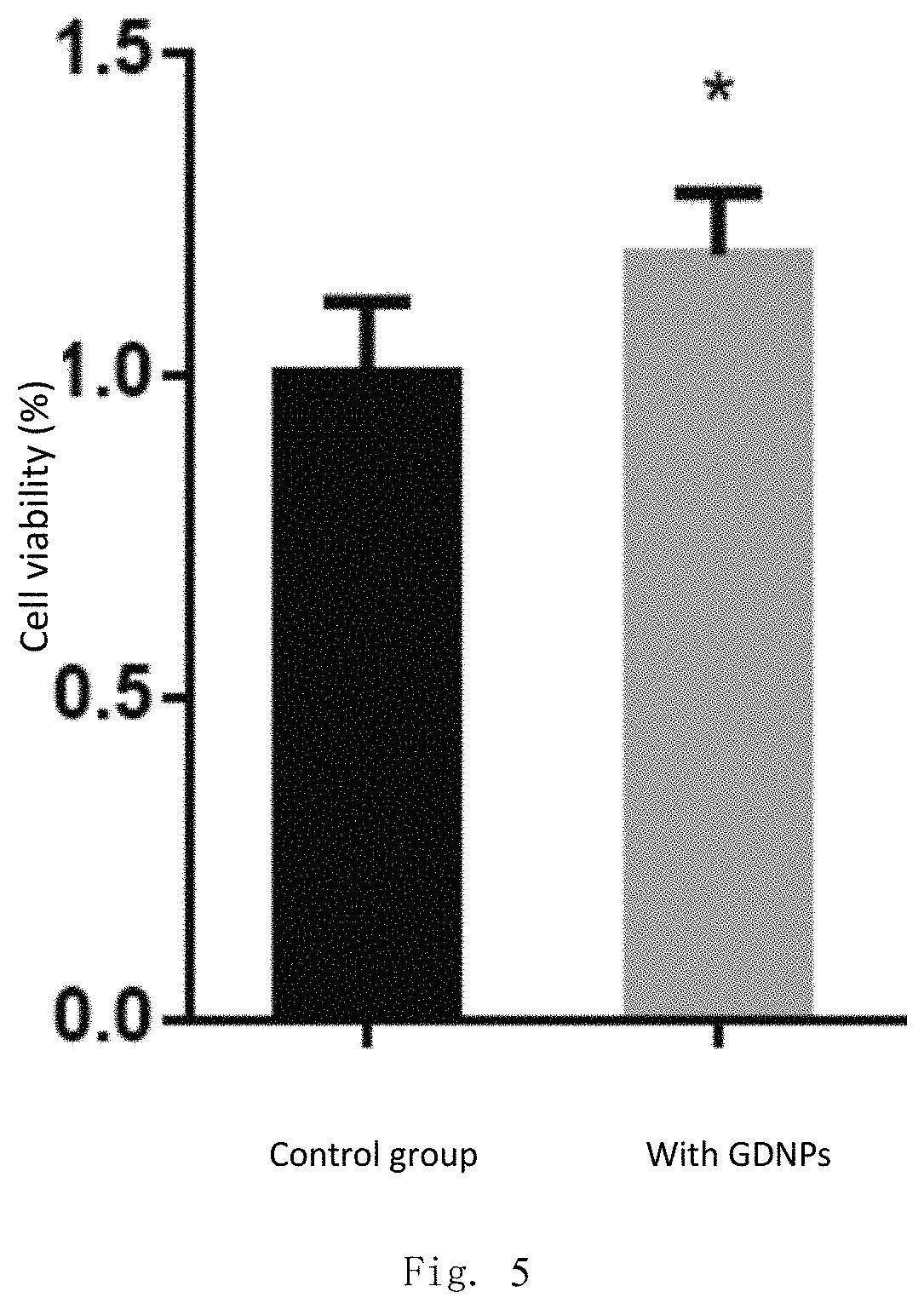Preparation and application of ginseng derived membranous microparticles
a technology of ginseng and membranous microparticles, which is applied in the field of immunopotentiators, can solve the problems of inability to fully promote the cell-mediated immune response, pathogens and tumor cell components located in the cells cannot be removed, and achieves the effects of improving the tumor microenvironment, effective promoting proliferation and activation, and good application prosp
- Summary
- Abstract
- Description
- Claims
- Application Information
AI Technical Summary
Benefits of technology
Problems solved by technology
Method used
Image
Examples
example 1
on of Ginseng-Derived Microparticles
[0055](1) The fresh ginseng was washed with clear water and squeezed by a low-speed screw extrusion technology in an environment of 20° C. to obtain a slurry;
[0056](2) The squeezed slurry was filtered through a 500 mesh sieve in an environment of 20° C. to remove impurities, and a filtrate was collected;
[0057](3) The collected filtrate was centrifuged at 200×g for 10 minutes, a precipitate was discarded, and a supernatant was collected; the supernatant was centrifuged at 2,000×g for 30 minutes, a precipitate was discarded, and a supernatant was collected; the supernatant was centrifuged at 10,000×g for 60 minutes, a precipitate was discarded, and a supernatant was collected; finally, the supernatant was centrifuged at 120,000×g for 60 minutes, and a precipitate was collected;
[0058](4) The precipitate was resuspended in a phosphate buffer at pH 7.2, and then centrifuged at 120,000×g for 60 minutes, and a precipitate was collected; the precipitate w...
example 2
on of American Ginseng-Derived Microparticles
[0059](1) The fresh American ginseng was washed with clear water and squeezed by a low-speed screw extrusion technology in an environment of 10° C. to obtain a slurry;
[0060](2) The squeezed slurry was filtered through a 200 mesh sieve in an environment of 10° C. to remove impurities, and a filtrate was collected;
[0061](3) The collected filtrate was centrifuged at 500×g for 5 minutes, a precipitate was discarded, and a supernatant was collected; the supernatant was centrifuged at 5,000×g for 10 minutes, a precipitate was discarded, and a supernatant was collected; the supernatant was centrifuged at 12,000×g for 30 minutes, a precipitate was discarded, and a supernatant was collected; finally, the supernatant was centrifuged at 100,000×g for 90 minutes, and a precipitate was collected;
[0062](4) The precipitate was resuspended in a phosphate buffer at pH 7.4, and then centrifuged at 100,000×g for 90 minutes, and a precipitate was collected; ...
example 3
on of Notoginseng-Derived Microparticles
[0063](1) The fresh Notoginseng was washed with clear water and squeezed by a low-speed screw extrusion technology in an environment of 25° C. to obtain a slurry;
[0064](2) The squeezed slurry was filtered through a 1,000 mesh sieve in an environment of 25° C. to remove impurities, and a filtrate was collected;
[0065](3) The collected filtrate was centrifuged at 500×g for 10 minutes, a precipitate was discarded, and a supernatant was collected; the supernatant was centrifuged at 5,000×g for 30 minutes, a precipitate was discarded, and a supernatant was collected; the supernatant was centrifuged at 12,000×g for 45 minutes, a precipitate was discarded, and a supernatant was collected; finally, the supernatant was centrifuged at 200,000×g for 60 minutes, and a precipitate was collected;
[0066](4) The precipitate was resuspended in a phosphate buffer at pH 7.3, and then centrifuged at 200,000×g for 60 minutes, and a precipitate was collected; the pre...
PUM
 Login to View More
Login to View More Abstract
Description
Claims
Application Information
 Login to View More
Login to View More - R&D
- Intellectual Property
- Life Sciences
- Materials
- Tech Scout
- Unparalleled Data Quality
- Higher Quality Content
- 60% Fewer Hallucinations
Browse by: Latest US Patents, China's latest patents, Technical Efficacy Thesaurus, Application Domain, Technology Topic, Popular Technical Reports.
© 2025 PatSnap. All rights reserved.Legal|Privacy policy|Modern Slavery Act Transparency Statement|Sitemap|About US| Contact US: help@patsnap.com



